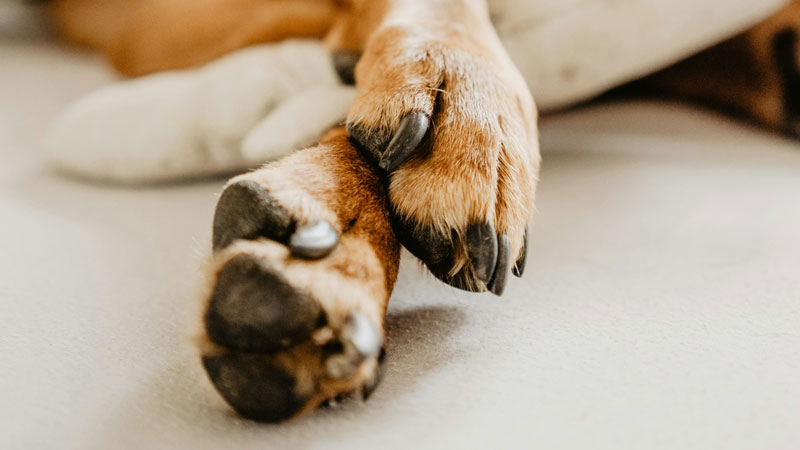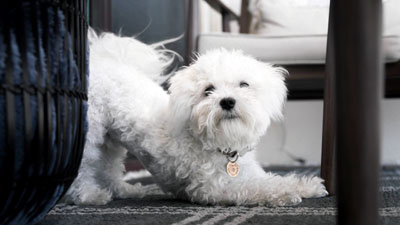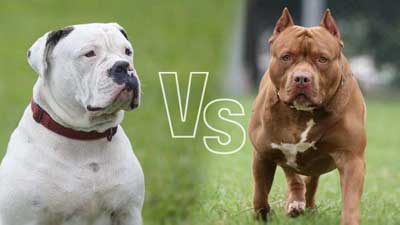- Size
- Smallest
- Small
- Small to Medium
- Medium
- Large
- Giant
- Characteristics
- Smartest
- Hypoallergenic
- Fluffy
- Best Guard
- Best Family
- Best for Kids
- Low Shedding
- Healthiest
- Police Dogs
- Most Calm
- Quietest
- Color
- White
- Black
- Grey
- Brown
- Blue
- Red
- Coat
- Hairless
- Short
- Long
- Origin
- Japan
- China
- Australia
- Germany
- Italy
- United States
- France
- Group
- Hound
- Terrier
- Herding
- Toy
- Working
- Sporting
Why Are Dogs' Feet Sweaty? And Reasons Behind

Photo by Ruby Schmank on Unsplash
Dogs, with their lovable personalities and endearing habits, have a way of keeping their owners endlessly curious. One such mysterious aspect of canine physiology is the perception that dogs' feet can get sweaty. While it may seem peculiar to associate the concept of sweating with our four-legged friends, understanding the factors at play can shed light on this canine phenomenon.
In this comprehensive exploration, we'll delve into the intricacies of why dogs' feet might be considered "sweaty," exploring the biology, purpose, and potential concerns associated with this intriguing aspect of canine anatomy.
Paw Perspiration - A Misnomer or Reality?
First and foremost, it's essential to clarify that dogs don't possess sweat glands in the same way humans do. Unlike humans, who rely on eccrine sweat glands distributed across their skin for thermoregulation, dogs primarily regulate body temperature through panting. So, when we refer to a dog's "sweaty" paws, we're not talking about a conventional sweating process.
Understanding Canine Paw Pads
To comprehend why dogs' paws might feel damp or cool, it's crucial to explore the unique structure of their paw pads. Paw pads serve various functions for dogs, acting as protective cushions, providing traction, and assisting in temperature regulation. Unlike the skin on the rest of their body, the paw pads contain specialized sweat glands called merocrine glands, which are concentrated in specific areas, contributing to the perception of "sweatiness."
The Merocrine Glands and Moisture Regulation
Merocrine glands, also known as eccrine glands, are responsible for producing a watery, odorless sweat that helps cool the body. While the majority of a dog's sweat glands are located in their nose and paw pads, they play a minimal role in regulating body temperature compared to humans. The primary purpose of the merocrine glands in a dog's paw pads is believed to be maintaining moisture for traction and protecting the pads from drying out or cracking.
Dogs Release Heat through Paw Pads
While panting is the primary method dogs use to dissipate heat, they can also release some heat through their paw pads. When dogs are in warmer environments, it's not uncommon for their paw pads to feel cooler than the surrounding temperature. This cooling effect occurs as a result of the moisture on the paw pads evaporating, similar to how humans experience a cooling sensation when sweating.
Dogs' Paw Pads and Surface Sensitivity
Beyond their role in temperature regulation, a dog's paw pads are highly sensitive and serve as an essential tool for understanding their environment. The moisture on their paw pads can enhance their grip on various surfaces, aiding in stability and traction. This heightened sensitivity allows dogs to navigate different terrains and surfaces effectively.
The Importance of Sweat Glands for Dogs
Sweating through the paws plays a crucial role in maintaining a dog's overall health and well-being. The ability to regulate body temperature through paw sweating is particularly significant for certain dog breeds that are prone to overheating or have brachycephalic (short-nosed) features. These breeds, such as Bulldogs, Pugs, and Boxers, are more susceptible to heat-related illnesses due to their limited ability to cool down through panting alone. Sweating through their paws provides an additional cooling mechanism and helps prevent these breeds from overheating.
Furthermore, dogs' sweat glands serve as an essential social and communication tool. Dogs have a highly developed sense of smell, and the pheromones released through their sweat glands provide valuable information to other dogs. These pheromones can convey a range of messages, including territorial markings, reproductive signals, and emotional states.
Potential Concerns with Damp Paw Pads:
While a certain level of moisture on a dog's paw pads is normal and serves a purpose, excessive dampness or changes in moisture levels might warrant attention. Here are some potential concerns associated with damp paw pads:
Allergies or Irritants:
Dogs can be allergic to certain substances they come into contact with, leading to irritation and increased moisture on their paw pads.
Infections:
Moist environments can potentially foster the growth of bacteria or fungi, leading to infections. Regular inspection of paw pads for signs of redness, swelling, or odor is advisable.
Hyperhidrosis:
In rare cases, dogs may experience hyperhidrosis, a condition characterized by excessive sweating. This can be a symptom of an underlying health issue and should be evaluated by a veterinarian.
Caring for Dogs' Sweaty Feet
While sweating from the paws is a natural and necessary process for dogs, it is essential to take care of their feet to ensure their overall comfort and health. Here are a few tips for maintaining healthy paw pads:
Regular Paw Inspections: Check your dog's paws regularly for any signs of damage, such as cuts, cracks, or foreign objects stuck between their toes. Keep their paws clean to prevent the build-up of dirt and bacteria, which can lead to infections.
Moisturize Dry Paws: Occasionally, dogs' paw pads can become dry and cracked. Using a pet-safe moisturizer can help keep their paw pads supple and prevent discomfort.
Protect from Extreme Temperatures: Be mindful of the temperature and walking surfaces during hot or cold weather. Excessive heat can cause paw pad burns, while freezing temperatures can lead to frostbite. Dog booties or paw wax can provide protection in extreme conditions.
Provide Cooling Surfaces: Offer cooling mats or damp towels for your dog to lie on during hot weather. These surfaces can help dissipate heat and provide comfort.
Conclusion
While it may come as a surprise to some, dogs do sweat, primarily through their paws. Sweating from the feet serves the purpose of maintaining body temperature, particularly in hot weather or during physical activity. It helps them cool down by dissipating heat through the evaporation of moisture on their paw pads. Additionally, emotional sweating can occur in response to stress or excitement.
Understanding the role of sweat glands in dogs' paws allows us to appreciate this unique aspect of their physiology. By taking care of their paw pads and ensuring their comfort, we can help our furry friends thrive in various climates and situations. Remember to provide adequate hydration, seek shade during hot weather, and consult with a veterinarian if you have concerns about your dog's sweating or overall well-being.
You May Also Like
 Help & AdviceThe Zen Zone: Exploring 5 Relaxing Poses for Dogs
Help & AdviceThe Zen Zone: Exploring 5 Relaxing Poses for Dogs Dog Training TipsThe Downward Dog Pose: A Canine Perspective
Dog Training TipsThe Downward Dog Pose: A Canine Perspective Dog BehaviorWhy Do Dogs Yawn? and The Meaning Behind
Dog BehaviorWhy Do Dogs Yawn? and The Meaning Behind Breed ComparisonAmerican Bulldog vs. Pit Bull: Which is Stronger?
Breed ComparisonAmerican Bulldog vs. Pit Bull: Which is Stronger? Breed ComparisonBoston Terrier vs. French Bulldog: Which Is Better?
Breed ComparisonBoston Terrier vs. French Bulldog: Which Is Better? Breed ComparisonPug vs. French Bulldog: Which is Better for Families?
Breed ComparisonPug vs. French Bulldog: Which is Better for Families?